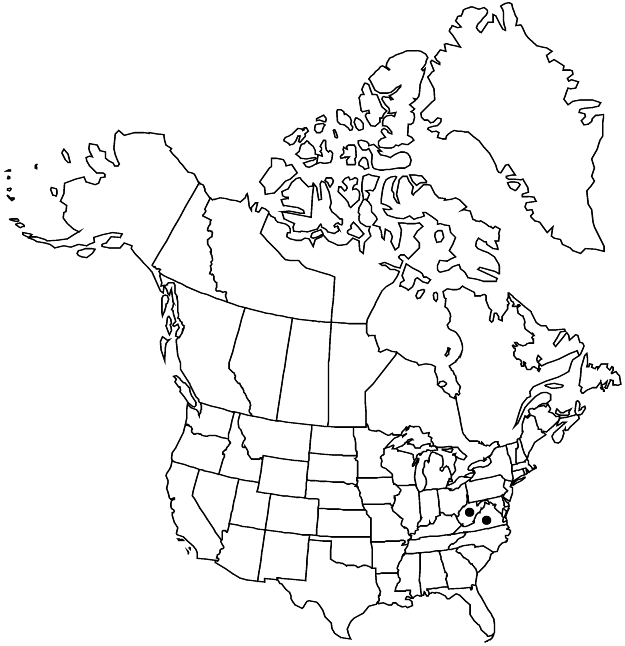Eriogonum allenii
in A. Gray et al., Manual ed. 6, 734. 1890.
Herbs, erect, 3–5(–7) × 0.5–1 dm, tomentose. Stems: caudex absent; aerial flowering stems erect, stout, solid, not fistulose, arising directly from a taproot, 2–4 dm, tomentose. Leaves basal, not in rosettes; petiole 5–15 cm, tomentose to floccose; blade oblong to ovate, (5–)10–15 × 4–8 cm, densely brownish-white-tomentose abaxially, floccose or glabrous and green adaxially, margins entire, plane. Inflorescences compound-umbellate, 10–40(–50) × 8–30(–50) cm; branches tomentose; bracts 3–6, leaflike at proximal node, 1–10(–12) × 0.5–4(–5) cm, often scalelike distally. Involucres 1 per node, campanulate, 3–5(–7) × (4–)5–8 mm, tomentose; teeth 5–7, erect or slightly spreading, 0.8–1.5 mm. Flowers 3–7 mm, including 1–1.5 mm stipelike base; perianth bright yellow, densely pubescent abaxially; tepals dimorphic, those of outer whorl broadly lanceolate to elliptic, 3–6 × 1.5–3 mm, those of inner whorl elliptic to fan-shaped, 4–7 × 2.5–4 mm; stamens exserted, 3–5(–7) mm; filaments pilose proximally. Achenes light brown to brown, 4–6 mm, glabrous except for sparsely pubescent beak.
Phenology: Flowering Jun–Oct.
Habitat: Rocky shale slopes, oak and pine woodlands
Elevation: 400-800 m
Discussion
Eriogonum allenii is restricted to the Appalachian shale barrens of Virginia (Alleghany, Augusta, Bath, Botetourt, Craig, Frederick, Highland, Montgomery, and Shenandoah counties) and West Virginia (Greenbrier, Monroe, and Pendleton counties), where it is local and infrequent, and found in four geographic areas of concentration. The plants are protected at The Nature Conservancy’s Slaty Mountain site in Monroe County, West Virginia, and in Douthat State Park in Bath County, Virginia. The species occasionally is cultivated.
Selected References
None.
